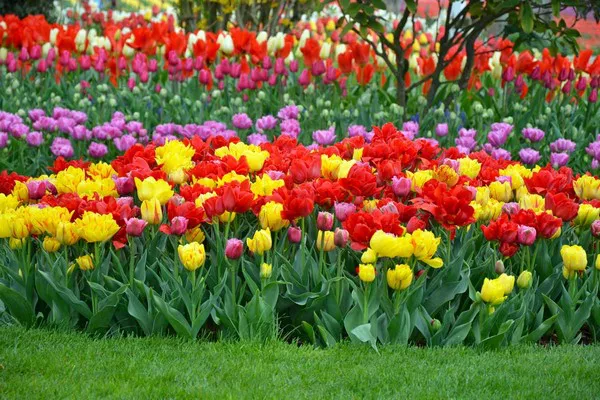Tulips, with their vibrant colors and elegant shapes, have captivated gardeners and enthusiasts for centuries. While tulips are commonly propagated through bulbs, many enthusiasts seek to grow tulips from seeds to explore new varieties and expand their collections. Harvesting tulip seeds from flowers can be a rewarding yet delicate process that requires patience, attention to detail, and an understanding of the plant’s reproductive cycle. In this guide, we will delve into the intricate steps involved in obtaining tulip seeds from flowers, from pollination to seed collection and storage.
Understanding the Tulip Reproductive Cycle
Before diving into the process of obtaining tulip seeds, it’s essential to understand the reproductive cycle of tulips. Tulips belong to the genus Tulipa and are part of the Liliaceae family. These perennial bulbous plants typically bloom in spring, showcasing an array of colors and shapes.
Tulips reproduce sexually, relying on pollination to produce seeds. The tulip flower comprises several reproductive organs, including stamens and pistils. The stamen contains pollen, while the pistil consists of the stigma, style, and ovary. Pollination occurs when pollen from the stamen lands on the stigma, initiating the fertilization process.
Once fertilized, the ovary develops into a seed pod, encapsulating the seeds within. As the seed pod matures, it gradually dries out, eventually splitting open to release the seeds. Understanding this reproductive process is crucial for effectively harvesting tulip seeds from flowers.
Selecting Healthy Tulip Plants
To obtain viable seeds, it’s imperative to select healthy and robust tulip plants for seed production. Choose tulip varieties known for their vigor and disease resistance. Healthy plants are more likely to produce viable seeds, ensuring better germination rates and robust seedlings.
Inspect the foliage and bulbs for signs of disease, pest infestation, or abnormalities. Opt for tulip plants with sturdy stems, vibrant leaves, and well-formed flowers. Healthy plants not only yield superior seeds but also contribute to the overall health of your garden ecosystem.
Pollination Techniques
Pollination is a critical step in the seed production process. While tulips are capable of self-pollination, cross-pollination between different tulip varieties often results in more diverse and interesting seedlings. Here are several pollination techniques to consider:
1. Hand Pollination: Hand pollination involves manually transferring pollen from one tulip flower to another, facilitating cross-pollination. Use a small brush or cotton swab to collect pollen from the stamen of one flower and gently dab it onto the stigma of another flower. Repeat this process across different tulip varieties to achieve diverse seed combinations.
2. Natural Pollination: In natural pollination, insects such as bees and butterflies play a crucial role in transferring pollen between tulip flowers. Encourage pollinator activity in your garden by planting a variety of flowering plants that attract bees and other beneficial insects.
3. Bagging Technique: To control the pollination process and prevent unwanted cross-pollination, consider using the bagging technique. Enclose selected tulip flowers in fine mesh bags before they open to exclude insects and pollen from other sources. Once the flowers open, manually transfer pollen between the bagged flowers to facilitate controlled cross-pollination.
Seed Development and Maturation
After successful pollination, the fertilized ovary begins to develop into a seed pod. As the seed pod matures, it undergoes several stages of growth and ripening. Monitor the seed pods regularly to track their development and identify signs of maturity.
Initially, the seed pod appears green and plump, gradually transitioning to a brownish hue as it matures. As the seeds ripen, the pod may begin to dry out and split open, exposing the seeds within. Exercise patience during this stage, as premature harvesting may result in underdeveloped seeds with reduced viability.
Harvesting Tulip Seeds
Harvesting tulip seeds requires precision and care to ensure optimal seed quality. As the seed pods mature and begin to split open, carefully remove them from the tulip plants using sharp scissors or pruners. Handle the seed pods gently to avoid damaging the seeds inside.
Place the harvested seed pods in a dry and well-ventilated area to allow for further drying and seed maturation. Avoid exposing the seeds to excessive moisture, as it can lead to mold and rot. Monitor the drying process closely and intervene if any signs of decay or mold appear.
Once the seed pods have dried completely and the seeds are firm and plump, carefully extract the seeds from the pods. Use your fingers to separate the seeds from the pod, taking care not to crush or damage them in the process. Discard any seeds that appear shriveled, discolored, or otherwise compromised.
Seed Storage and Viability
Proper seed storage is essential for maintaining seed viability and ensuring successful germination. Store tulip seeds in a cool, dry, and dark environment to prevent moisture buildup and premature sprouting. Consider using airtight containers or resealable bags to protect the seeds from exposure to air and humidity.
Label each seed batch with the tulip variety and date of harvest to track seed viability and germination rates accurately. Store the seeds in a refrigerator or cool cellar with stable temperatures between 35°F and 45°F (1.7°C to 7.2°C). Periodically check the seeds for signs of deterioration and discard any seeds that show signs of mold or decay.
Conclusion
Harvesting tulip seeds from flowers is a rewarding endeavor that allows gardeners to explore the vast array of tulip varieties and create unique hybrids. By understanding the tulip reproductive cycle, employing effective pollination techniques, and practicing proper seed harvesting and storage methods, enthusiasts can successfully propagate tulips from seeds and expand their gardening horizons. With patience, dedication, and a touch of creativity, cultivating tulips from seeds opens up a world of possibilities for gardeners to enjoy the beauty and diversity of this beloved spring flower.


